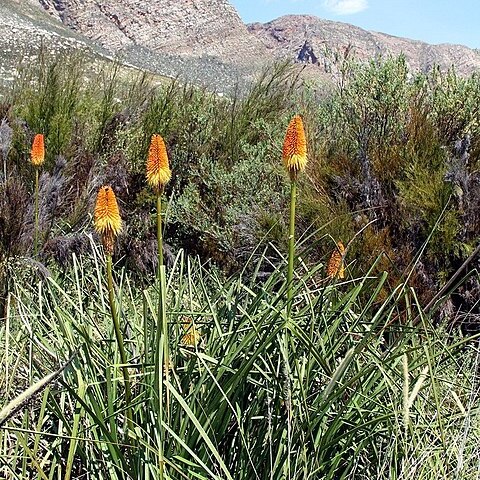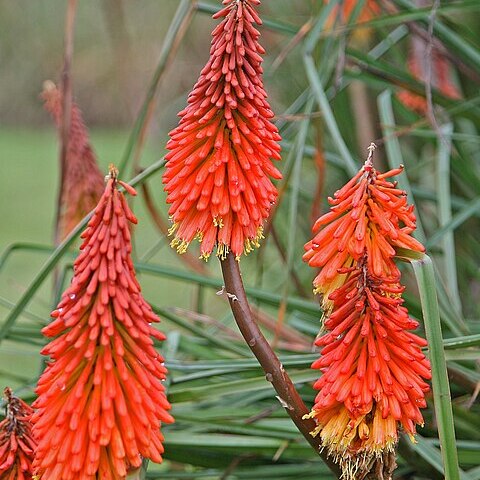Inflorescence a dense or lax subspicate raceme of usually numerous flowers on a simple (rarely branched), erect, leafless, stout or somewhat slender, terminal peduncle (scape); peduncle occasionally with 1–3 sterile bracts below the inflorescence; racemes usually bicolorous and ± strongly red at the apex, grading through various shades of red to yellow or yellow-green or white beneath, or sometimes the racemes concolorous and ± uniformly red or greenish-yellow; bracts persistent, scarious, longer than the pedicels; pedicels short or almost absent, lengthening in fruit, articulated at the apex; flowers patent or pendulous, usually with a red pigment conspicuous in the buds, young flowers and flower-tips, this pigment usually ± quickly fading in the maturing flowers.
Ovary sessile, ovoid, 3-locular; ovules many in each locule; style filiform, ± equalling the stamens at anthesis, usually becoming exserted; stigma minute, capitate.
Rhizome horizontal, with erect slender or corm-like branches; the nodes distant in solitary plants and closely spaced in caespitose (clump-forming) plants.
Stamens 6, as long as or longer than the perianth at anthesis, the 3 inner stamens longer than the outer.
Perianth segments ± fused; tube campanulate to cylindrical or somewhat funnel-shaped; lobes unequal.
Leaves rosulate to subdistichous, linear, usually keeled; margins entire or serrulate.
Perennial herbs, solitary or caespitose, mostly acaulescent.
Seeds ovoid, somewhat flattened, acutely 3-angled or winged.
Capsule globose to ovoid, triquetrous.


